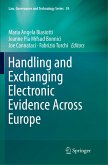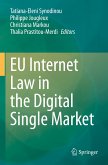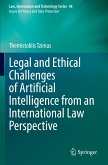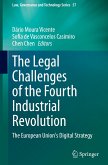Both legal scholars and computer scientists will be curious to know how the gap between law and computing can be bridged.
The law, and also jurisprudence, is based on language, and is mainly textual. Every syntactic system has its semantic range, and so does language, which in law achieves a high degree of professional precision. The use of visualisations is a syntactic supplement and opens up a new understanding of legal forms. This understanding was reinforced by the paradigm shift from textual law to legal informatics, in which visual formal notations are decisive. The authors have been dealing with visualisation approaches for a long time and summarise them here for discussion.
In this book, a multiphase transformation from the legal domain to computer code is explored. The authors consider law enforcement by computer. The target view is that legal machines are legal actors that are capable of triggering institutional facts. In the visualisation of statutorylaw, an approach called Structural Legal Visualisation is presented. Specifically, the visualisation of legal meaning is linked with tertium comparationis, the third part of the comparison. In a legal documentation system, representing one legal source with multiple documents is viewed as a granularity problem. The authors propose to supplement legislative documents ex ante with explicit logic-oriented information in the form of a mini thesaurus. In contrast to so-called strong relations such as synonymy, antonymy and hypernymy/hyponymy, one should consider weak relations: (1) dialectical relations, a term of dialectical antithesis; (2) context relations; and (3) metaphorical relations, which means the use of metaphors for terms.
The chapters trace topics such as the distinction between knowledge visualisation and knowledge representation, the visualisation of Hans Kelsen's Pure Theory of Law, the separation of law and legal science, legal subsumption, legal relations, legal machines, encapsulation, compliance, transparency, standard cases and hard cases.
The law, and also jurisprudence, is based on language, and is mainly textual. Every syntactic system has its semantic range, and so does language, which in law achieves a high degree of professional precision. The use of visualisations is a syntactic supplement and opens up a new understanding of legal forms. This understanding was reinforced by the paradigm shift from textual law to legal informatics, in which visual formal notations are decisive. The authors have been dealing with visualisation approaches for a long time and summarise them here for discussion.
In this book, a multiphase transformation from the legal domain to computer code is explored. The authors consider law enforcement by computer. The target view is that legal machines are legal actors that are capable of triggering institutional facts. In the visualisation of statutorylaw, an approach called Structural Legal Visualisation is presented. Specifically, the visualisation of legal meaning is linked with tertium comparationis, the third part of the comparison. In a legal documentation system, representing one legal source with multiple documents is viewed as a granularity problem. The authors propose to supplement legislative documents ex ante with explicit logic-oriented information in the form of a mini thesaurus. In contrast to so-called strong relations such as synonymy, antonymy and hypernymy/hyponymy, one should consider weak relations: (1) dialectical relations, a term of dialectical antithesis; (2) context relations; and (3) metaphorical relations, which means the use of metaphors for terms.
The chapters trace topics such as the distinction between knowledge visualisation and knowledge representation, the visualisation of Hans Kelsen's Pure Theory of Law, the separation of law and legal science, legal subsumption, legal relations, legal machines, encapsulation, compliance, transparency, standard cases and hard cases.








